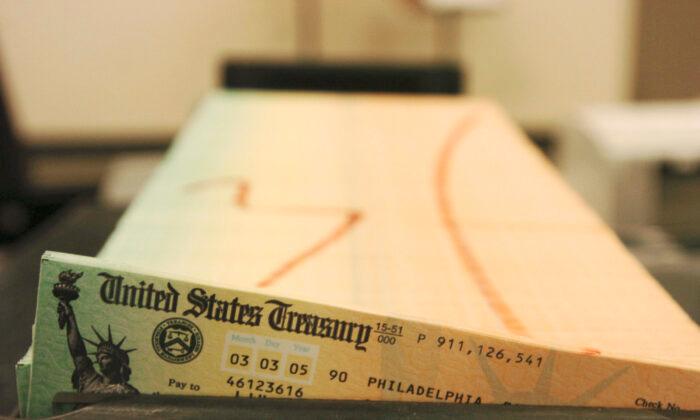Financial markets could be signaling that demand for U.S. government bonds is starting to weaken following abysmal results at a recent Treasury auction.
Investors sat on the sidelines during the proceedings, leading to a higher-than-expected yield for the long-term Treasury security. The highest yield accepted for the 30-year bonds was 4.837 percent, about 4 basis points higher than the projected yield before the auction.
Some market observers purport that the tepid demand for the 30-year bonds might not accurately depict what investors are thinking. However, recent auctions also recorded weaker demand for three-year and 10-year Treasurys.
Industry experts warn that this is another clear sign that the volatility in the bond market isn’t over and that the rout could persist. During the latest selloff, the two-year, 10-year, and 30-year yields climbed to their highest levels in 16 years as investors fear that the Federal Reserve isn’t finished raising interest rates amid the reacceleration of inflation and better-than-expected labor market data.
State of Treasury Securities
Over the past year, there has been a debate about whether sufficient liquidity exists in the bond market amid the Federal Reserve’s quantitative tightening campaign since March 2022.In October 2022, Treasury Secretary Janet Yellen conceded that she was “worried about a loss of adequate liquidity in the market” amid growing costs. But she was still confident that the market was functioning well and that her department would assess the steps necessary to improve the Treasury market.
One of the main challenges is that the U.S. government has been oversupplying markets with bonds.
After draining the Treasury General Account during the government default saga in the first half of this year, the department has been flooding capital markets with Treasurys. In the third quarter, it was estimated that more than $1 trillion in bonds were issued. Officials plan to sell another $850 billion in Treasury securities in the fourth quarter.
In addition to replenishing its bank account at the Federal Reserve, Washington has been looking to raise more cash to fund its ballooning national debt and budget deficit as tax revenues have slumped and spending has grown. However, should the lack of investor demand persist heading into 2024, it could support the case that the financial markets are becoming fearful of the federal government’s deteriorating fiscal condition.
The national debt recently topped $33.5 trillion, while the federal deficit is close to $2 trillion in the current fiscal year. Interest payments will be approximately $1 trillion this year.
Another demand factor is that the United States may need to compete for investors as central banks raise rates in response to above-trend inflation. If other markets are witnessing rising yields, the United States might need to offer better returns for investors.
In the UK, the 10-year bond recently touched a 15-year high of about 4.5 percent.
The Bank of Japan recently rattled international financial markets when it confirmed that it would allow the yield on its 10-year bond to rise a bit more.
Some assert that the Fed could eventually intervene and buy government bonds. But this would reverse the efforts made by the central bank to trim its balance sheet, which is still well above the pre-COVID-19-pandemic level of about $7.9 trillion.
Good News and Bad News
The good news is that a chorus of experts, including Goldman Sachs Research’s Chief Interest Rates Strategist Praveen Korapaty, forecast a rally to end the year and begin 2024.“I think that the selloff would not stick, meaning to the extent you see further selloff from here, you increase the risk of a sharper reversal in these yields,” he said.
The bad news is that the latest events in the Treasury market might serve as another cautionary tale from investors regarding the state of the country’s fiscal health.
The benchmark 10-year yield finished the Oct. 16 trading session at about 4.74 percent. The two-year yield firmed above 5.1 percent, while the 30-year bond inched closer to 4.89 percent.







